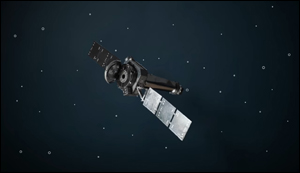Here’s how robots could repair or dispose of broken satellites in orbit
29. 1. 2020 | The Verge | www.theverge.com
These days, building and launching your own satellite means creating a sophisticated piece of technology — and then flinging it into space where you’ll never see it again. That means if anything breaks on the satellite, there’s not much you can do to fix it.
An emerging industry within the space community is trying to make launching a satellite a little less petrifying for operators. Known as satellite servicing, the business revolves around creating bots that can meet up with broken satellites in orbit to repair them, refuel them, or place them in orbits where they can last for many more years. These bots can also be used as garbage disposal units. They can nudge dead satellites closer to Earth where they get swallowed up by our planet’s atmosphere and meet a fiery end.

Such a service is enticing to satellite operators because a dead satellite comes with some severe consequences. First, it’s bad for a company’s bottom line. But above all, broken satellites can become dangerous. If you can no longer operate your satellite, it instantly becomes space junk zooming around Earth at upwards of 17,000 miles per hour.
Read more at The Verge
Image Credit: The Verge
-jk-




